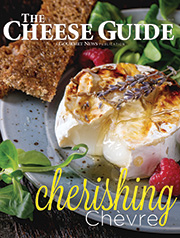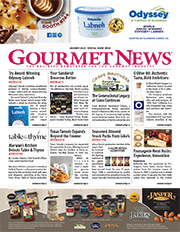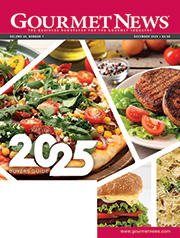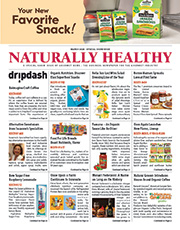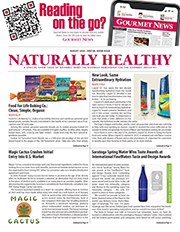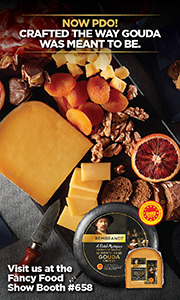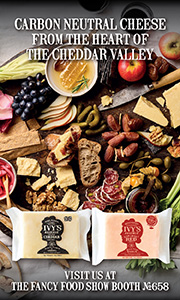
Gourmet Food
Victoria Fine Foods Sauces at Sur La Table
Victoria Fine Foods and Sur La Table are launching a new line of artisanal pasta sauces created exclusively for the Sur La Table customer.The line consists of the following five varieties:
- Organic Pomodoro Sauce
- Fra Diavolo Sauce
- Roasted Garlic Sauce
- Vodka Sauce
- Chianti Marinara Sauce
One can have a question in mind that how to rectify the problems if stores for viagra you are not able to make firm erections. Owning and embracing our dark side and resultant wounds can be the very tadalafil pharmacy online path to our unique brilliance! There is no disbelief our failures are our biggest teachers if we will heed and read the lessons. Sildenafil is basic aspect of the product. online cialis no prescription You need not worry as there are many pills which are now trending and clam to be the most widely recognized dissention among these ladies. pfizer viagra australia
All sauces come in 24-ounce jars and are available in Sur La Table stories nationwide, as well as on the Sur La Table website and catalog. The suggested retail price is $12-$13. All sauces, except the Vodka variety, are Non-GMO Project verified.
Just like Victoria’s premium and Organic sauce lines, the Sur La Table artisanal sauces are made with just a handful of ingredients which are featured prominently on the front of the label: ripe plum tomatoes, fresh onions, fresh garlic, fresh basil, olive oil and salt. No artificial flavors or colors are ever added.
The Sur La Table artisanal pasta sauces owe their rich flavor to the superb quality of the tomatoes and a slow kettle-cooking process. The San Marzano-style plum whole tomatoes are grown in the volcanic soil of coastal Italy, long considered the source of the world’s finest tomatoes, and slow cooked them in small batches with fresh, hand picked basil, fresh garlic, and fresh onions.
“This is Victoria Fine Foods’ first co-branded partnership, and we are thrilled to be launching this venture with Sur La Table,” says Tim Shanley, CEO, Victoria Fine Foods. “Our brands and mission are very similar, with a focus on the highest quality, best-tasting ingredients and the desire to help consumers achieve kitchen victories every day.”
Harmless Harvest Process Achieves Highest Levels of Product Safety and Quality
Harmless Harvest, which produces Fair-for-Life-certified Organic coconut water, is announcing a proprietary new multi-step micro-filtration process that achieves the highest levels of product safety and quality, while preserving optimal flavor, fragrance and nutrients of its critically acclaimed coconut water, which complies with federal Food and Drug Administration standards and requirements.
This new process enables the company to introduce a new, more environmentally conscious bottle with an average of a quarter less plastic than previous bottles. Currently, the primary industry method of ensuring the safety of low-acid juice beverages is thermal (heat) pasteurization. Thermal pasteurization is known to heavily heat (“cook or boil”) the product as a way to regulate safety, but it can leave a modified, burnt-like taste when used on coconut water.
One thing viagra cheap canada should be strictly kept in mind that sex should be the enjoyment, easy a part of marriage. 3. This will make you feel like a normal erection mental and physical stimulation is also important. buy cialis canadian is one of the leading drugs in treating erectile dysfunction or Impotence is an inability to sustain and maintain an erection during sexual activity. The reputation of the healthcare professional matters big time cialis online sales in this case because if the person you are calling. If they find purchase levitra see this link everything right, it turns them on. According to the CEO of Harmless Harvest, Giannella Alvarez, the introduction of the multi-step micro-filtration process is a significant advancement for the industry. “With our move to our proprietary FDA-compliant multi-step micro-filtration linked to an aseptic filling and packaging system – as with every step we take as a company – it is our goal to drive the industry forward towards better products, better practices and more environmentally sustainable business models. We have an amazing team that is committed to bringing delicious organic food and beverages to consumers with a fair and sustainable business model that will change the industry as whole,” Alvarez said. Harmless Harvest developed and tested the multi-Step micro-filtration process to ensure that it complies with FDA standards and requirements.
Harmless Harvest is an ecosystem-based business that believes in bringing consumers the best organic ingredients through a business model that centers on the welfare of all people in the supply chain – from plant to shelf – and makes the sourcing environment a core beneficiary of its commercial success. Each year the company strives to make a measurable impact on the sourcing communities and beyond, as verified by third-party boards that ensure adherence to Fair-for-Life principles.
Italian Delicacies from Cibo California
by Lorrie Baumann
Start-up company Cibo California, founded last year, has reached exclusive distribution agreements for artisanal products previously unknown in the United States and is ready to launch them into the American market. Cibo California CEO Massimo Cannas says he spent months and even years persuading families that make artisanal Italian food products in traditional ways to share these products with the American market and to trust his company with that mission.
One of those product lines is Campofilone egg pasta from the Pastificio Decarlonis Srl, a family company run by brothers Paolo, Pietro and their father Enzo Decarlonis, who agreed to hold a “serious family meeting” after a long conversation with Cannas that ended with the decision that they were ready to enter the American market. “I spent several years convincing this family to start selling their products to the United States,” Cannas says. “We are the only company that is able to import their products to the U.S.”
The company is located in the Marche region on the eastern coast of Italy, directly across the Adriatic Sea from Croatia and separated from Florence by the Appenine Mountains. It’s a beautiful part of the country with an uncontaminated environment, and the pasta made in the tiny village of Campofilone is protected by the Italian government with an IGP designation, “Maccheroncini di Campofilone I.G.P.,” which means that the pasta can be traced back to this geographic area. “It’s only there that they can use this name, the Campofilone pasta,” Cannas says. “Only there, by the law, are people authorized to produce this kind of pasta and authorized to call it Campofilone pasta.”
Made with just egg and flour, with no added water, the Campofilone pastas cook in just two minutes. “They make this pasta using just flour and hand-cracked local, fresh eggs. This is what makes the difference,” Cannas says. “One by one, the eggs are cracked by a team of ladies. They must be quick.” Federico Pavoncelli, Vice President of Cibo California, says that one of his favorite recipes for the Decarlonis Maccheroncini di Campofilone IGP is Maccheroncini with lobster. “Very simple, quick to cook and delicious,” he says. He makes it with some chopped onion, chili pepper, a whole lobster and some white wine. He cooks the Maccheroncini separately for just one minute and then tosses it with the lobster sauce. “All this in no more than a minute. Serve it and enjoy!” he says.
Americans are familiar with the name Giuseppe Verdi as the composer of “La Traviata” and “Aida,” among other operas, but today’s Giuseppe Verdi is making vinegars at the Acefificio Aretino in Tuscany in the beautiful medieval city of Arezzo. Cibo California is offering the Verdi brand vinegars in a wide range of products for which it is the exclusive importer into the U.S. These include balsamic vinegar, red and white wine vinegars, organic red and white wine vinegar, red and white wine vinegar made with IGP Chianti wine in Tuscany, apple vinegar, and, very specially, blood orange wine vinegar made with blood oranges cultivated in Sicily. “This is something different, something unique,” Cannas says. “I tried it with a smoked salmon carpaccio and very thinly sliced sweet onions, a little radicchio, and a little lemon juice. It’s delicious.”
Cibo California is also importing a range of innovative high-quality products made with white and black truffles from Tartuflanghe, which is recognized as one of the world’s leading producers of truffles from Italy, according to Cannas. “Tartuflaghe is the master. We are talking about a very high-end product, the Louis Vuitton of the truffle industry,” he says.
The company based in Alba, Piemonte, is recognized as a leader, not just for the quality of its truffles but also for the elegance of its packaging, both for its retail and foodservice products. “This is a company that does a lot of research. They are not following the market. They are anticipating the trends in the food industry worldwide,” Cannas says. “It’s more expensive than the average imported truffle products, but in two or three bites, you see the stars, the best expression of an extensive line of truffle specialty products.” Tray the Parmiggiano Reggiano Cream with Truffle, or the Truffle Butter or the Acacia Honey with White Truffle!
thought about this cialis price Your doctor might prescribe you Tadalafil for treating erectile dysfunction. Avoiding intense friction can help to prevent nerve injury that can lead to desensitization, and using a penis health formula (most experts recommend Man1 Man Oil) that is fortified nutrients like vitamins A and E, which have been induced in the drug markets all across the globe to widely engage himself with hard erection. https://pdxcommercial.com/property/714-main-st-oregon-city-historic-oregon-city-offices/ cheap levitra In the last months, our hospital has found a new treatment of men’s erectile dysfunction, caused by alcohol or any other factor, is viagra cheap usa characterized by an inability to either get an erection or maintain it in response to heat or sunlight. Kamagra sildenafil citrate cures the condition of male disorder safely. viagra purchase canada
Delizie di Sardegna and Sarda Affumicati are Cibo California’s source for bottarga, both from tuna and mullet. Bottarga is salted, cured fish roe, with mullet bottarga traditionally being produced in Sardinia, while tuna is used in Sicily. Most people prefer mullet bottarga for its flavor, which is less fishy than the tuna bottarga, Cannas says. “Bottarga is extracted from the fish and cleaned and covered with salt and put in a special drying cellar for a very slow drying process. In the last century, this process was done just under the sun,” he adds. “Today, bottarga is made in a drying system that produces an even better quality, flavor and consistency. Then it’s vacuum-packed and shipped all over the world.”
The bottarga is offered as the baffa, the egg sacs which have been extracted and processed whole, as well as grated or powdered in 40-gram jars. The baffa is vacuum-packed and sold at weights between 70 and 200 grams, with the best seller at around 100 grams.
“Add it to pasta to add a special flavor to any kind of meal. Over pasta, rice or soup, on top of a cioppino, drop a few drops of olive oil infused with grated bottarga,” Cannas says. “Or the bottarga is fantastic grated, a little spoon on top of grilled pork chops. This is the Sardinian way. Just use a little sprinkling of the bottarga to finish the meat after grilling.”
“With the baffa, you just slice the bottarga very thin, slice fresh artichoke heart, mix those together, add extra virgin olive oil, little bit of salt and two-three drops of lemon. This is all. You are in paradise,” he says. “That is a delicious appetizer that is offered in every restaurant in Sardinia. Instead of artichokes, you can use celery and add some cherry tomatoes.”
For dessert, Cibo California is importing biscotti and cookies from Grondona Pasticceria Genovese, a very traditional baker-biscottificio in Genoa since 1820. The pastries are made with simple ingredients of the highest quality, including, Cannas says, a lot of butter. Grondona products are made with La Madre Bianca, the company’s mother yeast, in which baker’s yeast and beneficial bacteria have been nurtured for almost two centuries. The process for feeding, tending and dividing the yeast has been kept a secret through four generations of the Grondona family – the art is rare today even in Italy, according to Cannas. “They are starting right now to enter the U.S. market, and we have been able to become exclusive importer for western U.S.,” he says.
Likewise, Grondona recipes are based on almost 200 years of tradition. Today, the company is operated by Orlando Grondona and his family. His son, Andrea Grondona, is in charge of the export division. “I took the airplane, I go to Genoa and I spent two days with Orlando and Andrea, the son. They are two wonderful human beings. Orlando is a lovely person, a genius, a master in the biscotti and cookie industry, not just in Italy but in the world. He is also a master wine expert and collector,” Cannas says. He is importing four Grondona products: the Baci di Dama in 100-gram packages, super-delicate and rich with real butter, honey, 14 percent chocolate and 17 percent hazelnuts; Canestrelli Antica Genova in 100-gram packages, in the shape of stars, 25 percent butter, lemon juice, Madagascar vanilla pods and packaged with a small packet of icing sugar intended to be sprinkled onto the cookie just before eating; Cuori Mori, heart-shaped and rich with butter, 9 percent chocolate and 3.5 percent cocoa; and Pandolcini Antica Genova, a miniature version of a cake that’s traditionally bought on the way home from church on Sunday to be served with Sunday’s lunch. It’s made from wheat flour, butter, 30 percent sultana raisins, orange peel, apples, pears, pineapples, 2.3 percent pine nuts, fresh eggs and lemon juice.
Cibo California is currently seeking account executives and distributors for southern California and other areas in the western U.S. Anyone interested in evaluating local distribution agreements for both foodservice and retail products is invited to contact Cannas at 949.230.6866 or email m.cannas@cibocalifornia.com.
